Nature’s Invisible Borders
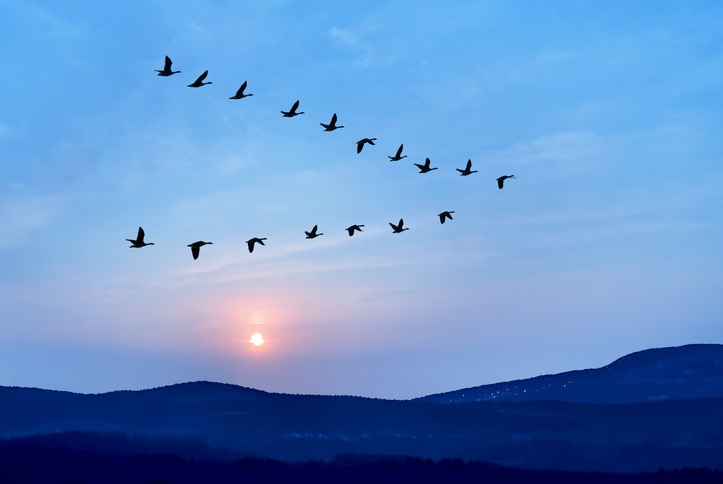
Some barriers in nature are invisible to us but absolute to animals. These strange divides, shaped by water chemistry, geology, or even magnetism, determine where species live, how they migrate, and why some ecosystems remain forever separate. From underwater walls to towering mountain ranges, here are 10 natural borders that animals instinctively avoid, even when nothing obvious stands in their way.
1. The Halocline in Alaska

In Alaska’s coastal waters, there’s a place where the ocean looks like it should be one smooth expanse, but it isn’t. Glacial meltwater, fresh and icy, slides over the denser saltwater of the Pacific, and the two refuse to mix. The result is a surreal boundary beneath the waves, a sharp line where colors shift and currents change. Divers say swimming through it feels like crossing into another reality, with the water turning cloudy and the light bending in strange ways. To fish, though, this isn’t a novelty. The difference in salinity is so severe that it acts like an electric fence, keeping creatures firmly on the side where they can breathe and feed without stress.
This invisible barricade isn’t just about discomfort. It dictates who lives where. Tiny plankton that form the base of the food web thrive only in their side’s chemistry, meaning predators and prey are locked into distinct neighborhoods. Salmon, known for straddling fresh and salt waters, tread carefully around these divides and only pass through when migration demands it. By keeping species separate, the halocline quietly engineers an ecosystem with more variety and balance than if everything blended together. It’s one of nature’s most elegant tricks: two oceans sharing the same space, but never the same life.
2. The Congo–Lualaba River Divide
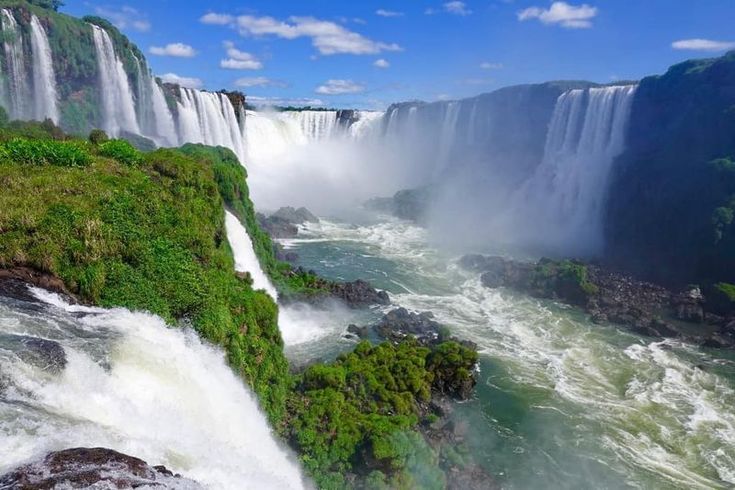
In the heart of Africa, a single stretch of river draws an invisible line that fish refuse to cross. The Congo and Lualaba rivers meet, but their swirling waters have kept fish populations on either side apart for millions of years. Instead of mingling, species evolved in isolation, shaping two completely different freshwater worlds. What looks like just another wide river to us is, in reality, a barrier as effective as a mountain range. For the creatures within it, crossing that divide is more than risky. The water chemistry, currents, and unfamiliar predators make survival nearly impossible for outsiders.
This separation has created one of the richest fish diversities on Earth. Scientists studying the region often find species that exist nowhere else, each uniquely adapted to its side of the flow. Some thrive in fast, oxygen-rich currents, while others are suited to slower, murkier depths. Because they cannot safely cross, the fish never had a chance to blend, leaving an extraordinary patchwork of life along the Congo Basin. To this day, the river acts like nature’s sorting hat, ensuring that two neighboring ecosystems remain distinct, colorful, and fiercely independent.
3. Magnetic Equator Zones
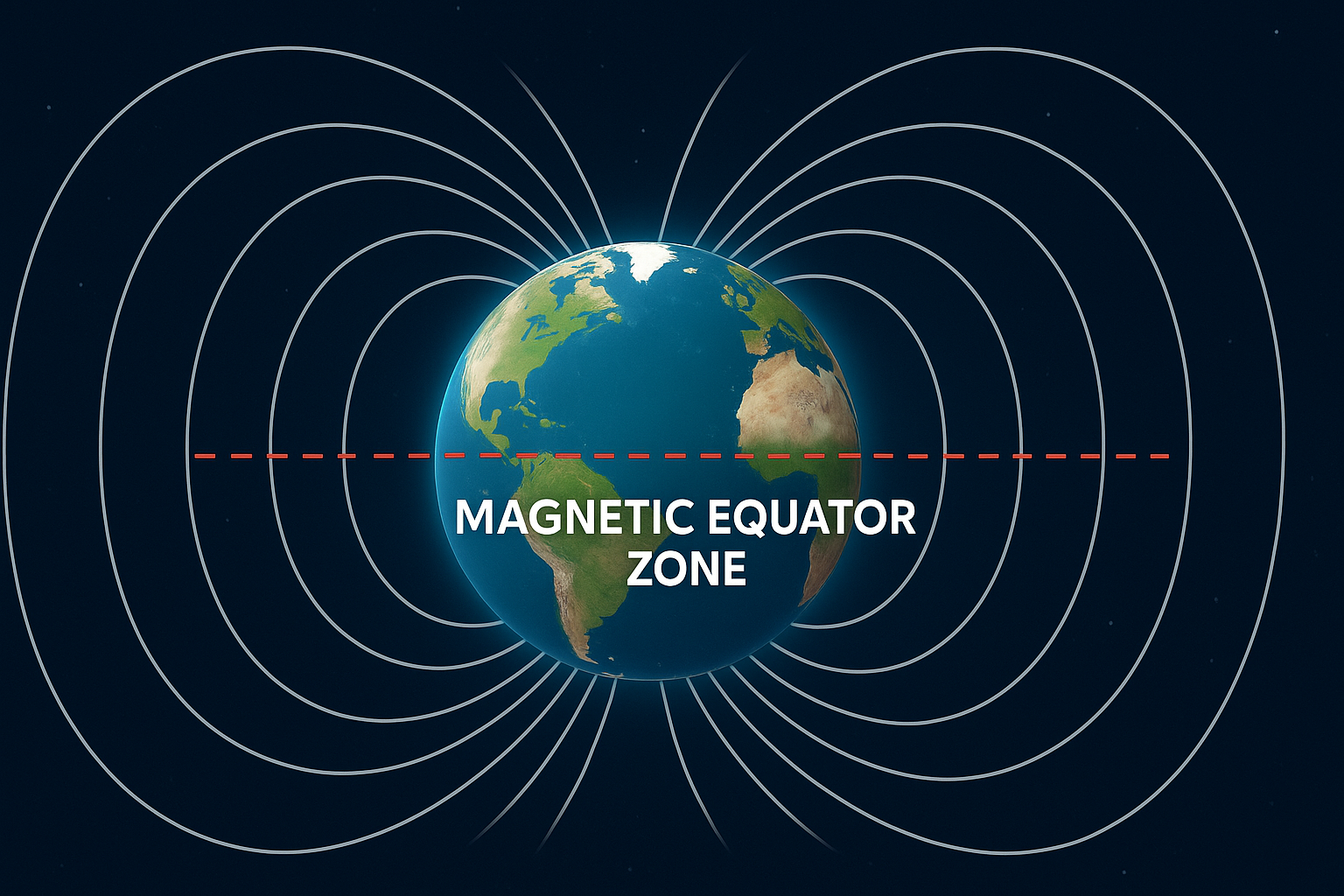
Every year, birds and whales set off on epic journeys guided by Earth’s magnetic field. Yet there is one place where their internal compass goes haywire: the magnetic equator. Here, the magnetic pull that usually points north or south fizzles out, leaving animals with little sense of direction. Instead of powering straight ahead, many species suddenly shift course or even stall, as if they have run into an unseen roadblock. For migratory creatures that rely on invisible cues, this zone is more than confusing. It is a boundary written into the planet itself.
Scientists have tracked flocks of birds that veer dramatically when they hit this magnetic blur, as well as whales that reroute mid-ocean with no visible landmark in sight. While the animals adjust instinctively, researchers are still piecing together how they sense and respond to the field’s quirks. What is clear is that the magnetic equator acts like a global checkpoint, nudging migration paths and shaping how species move across continents and seas. It is a reminder that even on a planet with no fences, animals still run into borders that only nature can draw.
4. The Isthmus of Panama
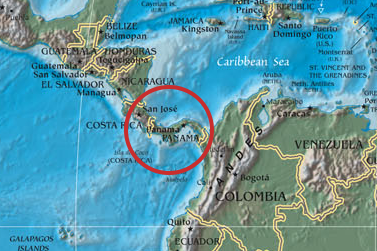
About three million years ago, a narrow strip of land rose from the sea and forever changed the map of life on Earth. The Isthmus of Panama formed when tectonic plates collided, sealing off the Atlantic from the Pacific. To humans, it looks like a simple land bridge connecting North and South America. To marine life, it became an impenetrable wall. Species that once swam freely between oceans were suddenly cut off, left to evolve separately on either side. Coral reefs, crustaceans, and countless fish found themselves trapped in their half of the world, never to mingle again.
The impact of this natural divide still shapes ecosystems today. Atlantic and Pacific marine species are so different that even if you placed them side by side, most could not survive in the other’s waters. On land, however, the isthmus became a highway for animals. Armadillos, giant ground sloths, and saber-toothed cats moved north, while bears, horses, and camels ventured south, triggering what scientists call the Great American Interchange. This narrow ribbon of earth became one of nature’s most powerful barriers, splitting oceans while stitching continents together.
5. The Wallace Line
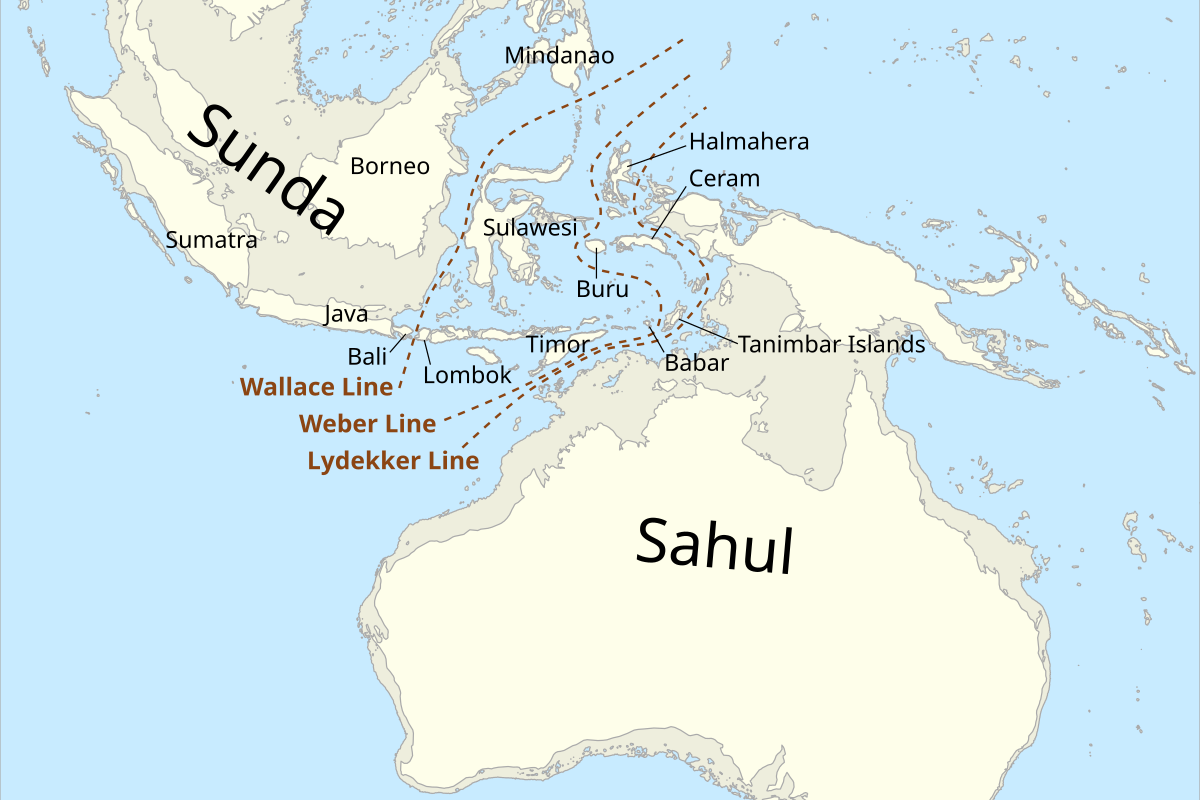
Southeast Asia and Australia may look like close neighbors on a map, but their wildlife tells a very different story. The Wallace Line, named after 19th century naturalist Alfred Russel Wallace, slices between the Indonesian islands of Bali and Lombok, running down through the deep waters of the Lombok Strait. On one side, you find tigers, elephants, and monkeys. On the other, marsupials like kangaroos, cockatoos, and the strange egg-laying echidna. Despite the short distance across the strait, species have almost never crossed. The trench is so deep and the currents so strong that even during the lowest sea levels, it remained a watery moat that kept two worlds apart.
This line became one of the clearest boundaries in biogeography, the science of how species are distributed around the globe. Wallace himself was astonished that creatures could live so close yet be so different, with no natural blending zone in between. His observations helped inspire the theory of evolution, showing how isolation drives the creation of new species. To this day, the Wallace Line is more than a quirk of geography. It is a bold reminder that Earth’s animals don’t just follow continents and coastlines. Sometimes, the rules of life are written into the depth of the sea itself.
6. Lake Malawi’s Rock Boundaries

Lake Malawi in East Africa is famous for its dazzling array of cichlid fish, each with its own colors, habits, and territories. What makes this lake extraordinary is not just the number of species but how strictly they stick to their own turf. Instead of roaming freely, many cichlids live among specific clusters of rocks, treating these natural borders like fortress walls. Fish from one rocky outcrop rarely, if ever, cross into another’s zone, even though nothing visible stops them. For these fish, a few boulders or a shift in the lakebed is enough to mark a boundary as real as a fence.
This unusual behavior has turned Lake Malawi into a living laboratory of evolution. Because groups stay separated, they develop unique colors, courtship rituals, and survival strategies that set them apart from their neighbors. Over thousands of years, this stubborn avoidance has created hundreds of distinct species, all within a single body of water. To divers and scientists, it is like swimming through neighborhoods where each block has its own rules and customs. What seems like an ordinary patch of rocks to us is, to the fish, a border that cannot be crossed without risking conflict or even death.
7. Ocean Thermoclines

Beneath the surface of the world’s oceans lies an invisible dividing line that few creatures dare to cross. Known as a thermocline, it is the layer where warm surface waters abruptly give way to the colder, darker depths below. The difference can be dramatic, with temperatures dropping by double digits within just a few feet. To a diver, it feels like swimming into an unexpected chill, but for marine animals, this boundary can be a hard stop. Many species are adapted only to a narrow range of temperatures, so the thermocline becomes the edge of their world.
These layers shape entire ecosystems. Sun-loving plankton thrive in the warm upper waters, feeding schools of fish that prefer the light and warmth. Below the thermocline, deep-sea species live in a colder, more stable environment, insulated from surface changes. Sharks, squid, and migratory fish sometimes push through, but they usually return quickly to the side that suits them best. By keeping warm and cold-water creatures apart, thermoclines create distinct communities within the same stretch of ocean. It is one of nature’s simplest yet most powerful boundaries, written not in stone or ice, but in temperature alone.
8. The Amazon’s Meeting of Waters
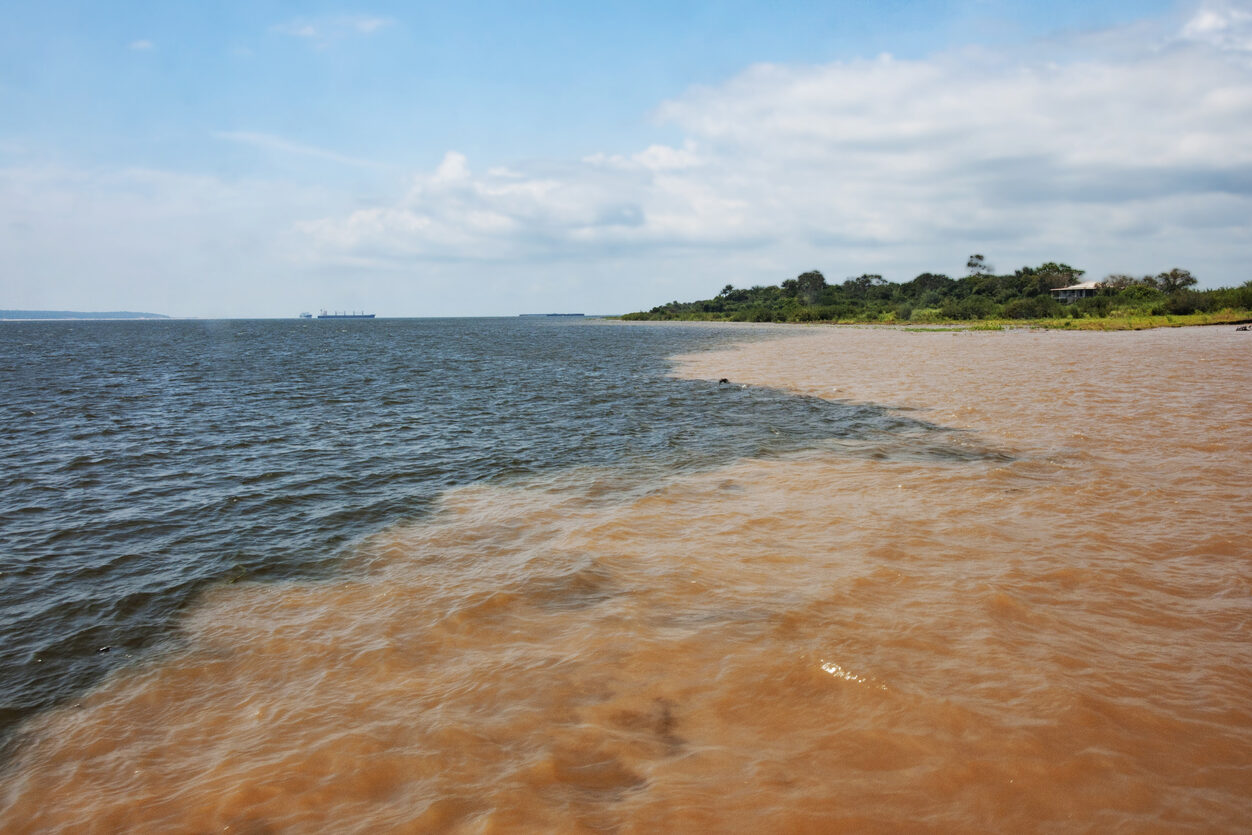
Outside the Brazilian city of Manaus, two great rivers meet but refuse to mix. The dark, almost black waters of the Rio Negro run side by side with the sandy-brown Rio Solimões, creating a striking visual split that stretches for miles. Tourists marvel at the spectacle from boats, snapping photos of a river that looks painted in two colors. But to the animals that live within it, this divide is more than cosmetic. The temperature, speed, and chemical makeup of the two rivers are so different that fish and other aquatic life tend to stay on their own side, avoiding the stressful conditions across the border.
The split keeps nutrients, sediments, and entire food webs separate, shaping distinct mini-ecosystems within a single river channel. Fish in the Rio Negro are adapted to acidic, slower-moving water, while those in the Solimões thrive in faster, murkier flows rich with silt. Even tiny plankton and insects choose sides, which in turn dictates where birds and larger predators hunt. Scientists call it one of the most dramatic natural barriers in the tropics, a reminder that sometimes the borders that matter most are the ones you cannot step across, only float beside.
9. Ice Shelves in Antarctica

At the bottom of the world, enormous slabs of ice extend from the Antarctic continent far into the sea. These floating ice shelves look static and lifeless, but beneath the surface they form walls that separate ecosystems as effectively as any mountain range. Cold, oxygen-rich waters hug the icy undersides, while the deeper ocean beyond is warmer and saltier. For creatures adapted to either environment, that shift is too extreme to cross easily. Polar fish, krill, and other icy specialists stay near the shelves, while deep-sea species remain excluded, locked out by a boundary they cannot tolerate.
These frozen barricades don’t just block animals. They also control how nutrients and currents flow across the Southern Ocean. The shelves act like lids, slowing the mixing of waters and keeping polar ecosystems uniquely isolated. Scientists studying under-ice communities often find life forms that exist nowhere else, some of which may never venture past the shelves’ edges. If the ice shelves collapse, as climate change threatens, it won’t only raise sea levels. It could erase one of the planet’s most important natural barriers, dissolving a separation that has safeguarded Antarctica’s distinct web of life for millions of years.
10. The Himalayas
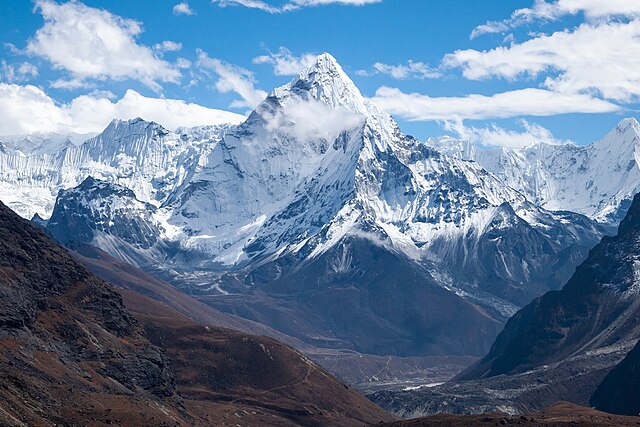
Stretching across Asia with towering peaks and frozen passes, the Himalayas form one of the most formidable natural barriers on Earth. Rising higher than any other mountain range, with Mount Everest as its crown, the Himalayas split climates, cultures, and ecosystems with a sheer wall of rock and ice. To most terrestrial animals, this is an impassable divide. Species living in India’s lush lowlands rarely, if ever, cross into the high plateaus of Tibet, and the creatures adapted to thin, icy air cannot survive the heat and humidity below. The mountains act as a filter, determining exactly where plants and animals can exist.
The separation has fueled some of the most distinctive biodiversity on the planet. Snow leopards and yaks roam the high altitudes, perfectly tuned to freezing winds and scarce oxygen, while elephants, tigers, and rhinos thrive on the southern slopes in subtropical forests. Few species are able to bridge the gap, which is why communities on either side evolved so differently despite their geographic closeness. Even today, the Himalayas remain a living wall, a reminder that sometimes nature itself draws the sharpest borders of all. For animals, these peaks are not just mountains. They are the ultimate “do not cross” sign.
Why These Barriers Matter
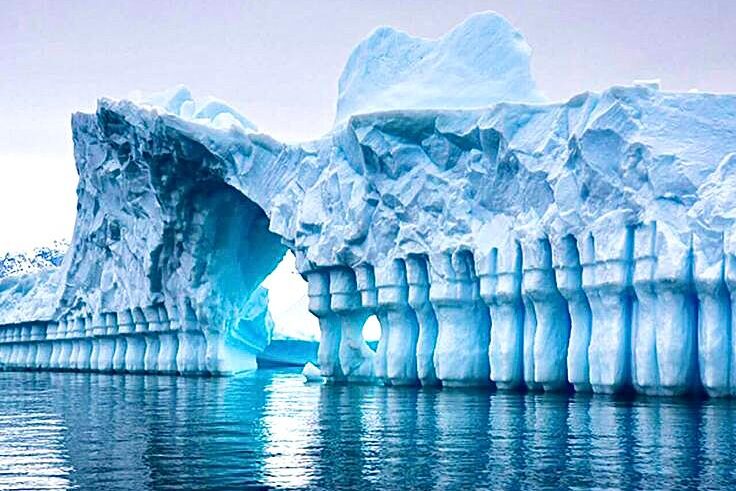
From icy waters in Alaska to the peaks of the Himalayas and the ice shelves of Antarctica, these natural borders quietly dictate the rhythm of life on Earth. They decide where species can survive, how they evolve, and why neighboring ecosystems can look so different despite being only miles apart. To us, they may seem invisible or arbitrary, but to animals, they are lines that cannot be crossed.
The existence of these boundaries reminds us how finely tuned life is to its environment and how fragile those systems can be if disrupted. Climate change, deforestation, and shifting oceans are already blurring some of these lines, forcing animals into places they were never meant to go. Protecting these natural divides is not just about saving landscapes. It is about preserving the rules that have shaped life for millions of years — rules that continue to keep the world’s biodiversity balanced today.
This story 10 Natural Barriers Animals Refuse to Cross and Why They Matter was first published on Daily FETCH


